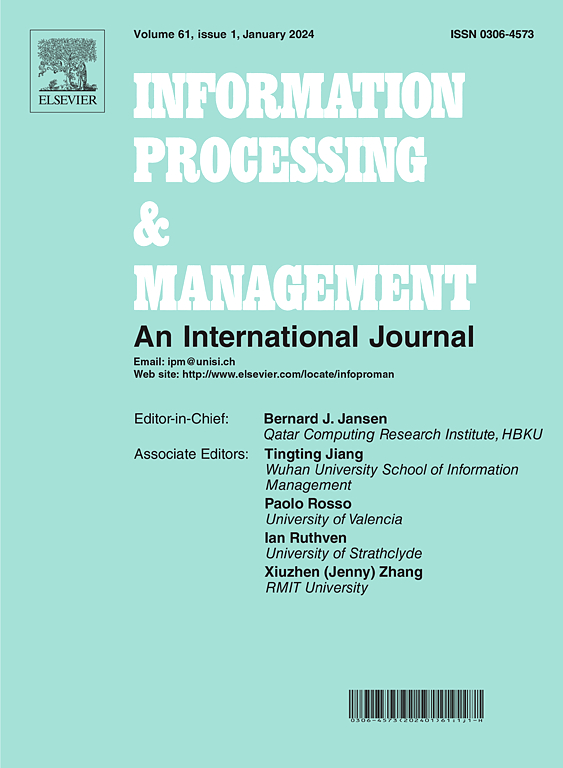A unified framework for multi-modal rumor detection via multi-level dynamic interaction with evolving stances
IF 7.4
1区 管理学
Q1 COMPUTER SCIENCE, INFORMATION SYSTEMS
引用次数: 0
Abstract
With the escalating dissemination of textual and visual content on the Internet, multi-modal rumor detection has garnered significant scholarly attention in recent research studies. Currently, the prevailing methods in multi-modal rumor detection tend to emphasize the information integration from source posts and images, overlooking the dynamic interaction between multi-modal sources and evolving conversational structures. Furthermore, they fail to recognize the potential advantage that introducing evolving user stances as a form of collective decision-making can improve the model’s performance in rumor classification. In this paper, we propose a novel Evolving Stance-aware Dynamic Graph Fusion Network (ESDGFN) to address the above issues. This network aims to integrate the source, the image and the dynamic conversation graph into a unified framework. Specifically, we begin by leveraging a cross-modal transformer for fine-grained feature fusion of the multi-modal sources. Simultaneously, based on the temporal attributes of posts, we construct a set of dynamically changing conversation graphs for each conversation thread, simulating and encoding the evolving stances of users towards the target event within these conversation graphs. Subsequently, we design a multi-level fusion strategy, incorporating both coarse-grained multi-modal feature guidance and fine-grained cross-modal similarity-aware fusion. This strategy aims to generate interactively enhanced multi-modal encoding and dynamic graph representations. The experimental results on both PHEME and Twitter datasets highlight the excellence of our ESDGFN model. It achieves 90.6% accuracy on PHEME, a 3.3% improvement compared to the state-of-the-art method, and 87% accuracy on Twitter, with a 2.4% improvement.
求助全文
约1分钟内获得全文
求助全文
来源期刊

Information Processing & Management
工程技术-计算机:信息系统
CiteScore
17.00
自引率
11.60%
发文量
276
审稿时长
39 days
期刊介绍:
Information Processing and Management is dedicated to publishing cutting-edge original research at the convergence of computing and information science. Our scope encompasses theory, methods, and applications across various domains, including advertising, business, health, information science, information technology marketing, and social computing.
We aim to cater to the interests of both primary researchers and practitioners by offering an effective platform for the timely dissemination of advanced and topical issues in this interdisciplinary field. The journal places particular emphasis on original research articles, research survey articles, research method articles, and articles addressing critical applications of research. Join us in advancing knowledge and innovation at the intersection of computing and information science.
 求助内容:
求助内容: 应助结果提醒方式:
应助结果提醒方式:


